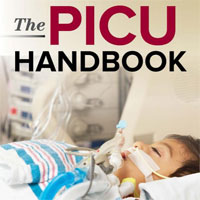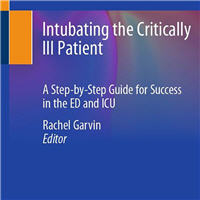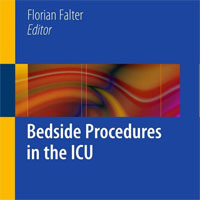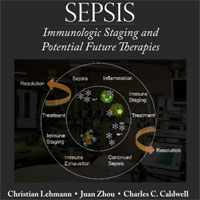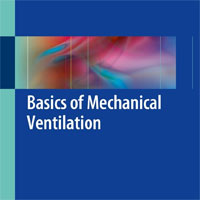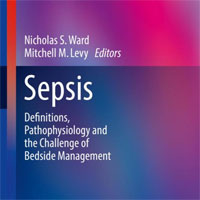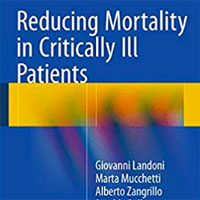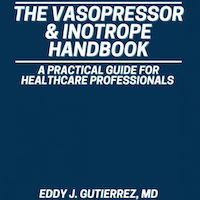Tag: hemorrhage
Marburg Virus Disease Outbreaks in Equatorial Guinea and Tanzania
The Centers for Disease Control and Prevention (CDC) is issuing this Health Alert Network (HAN) Health Advisory to inform clinicians and public health departments in the United States about two confirmed outbreaks of Marburg... read more
A Young Doctor’s Perspective Was Forever Changed by ICU Experience
A healthy 30-year-old doctor had an unexpected medical emergency while preparing for a procedure, which led to the discovery of a small hemorrhage in her dorsal brainstem. She was transferred to the neuro ICU and experienced... read more
Intracranial Pressure: Current Perspectives on Physiology and Monitoring
Intracranial pressure (ICP) monitoring is now viewed as integral to the clinical care of many life-threatening brain insults, such as severe traumatic brain injury, subarachnoid hemorrhage, and malignant stroke. It serves... read more
Algorithm to Predict Thromboembolism in COVID-19 Patients
Patients with COVID-19 are at increased risk for thrombosis and might be stratified on admission based on lower Pao2/FiO2 ratio, higher D-dimer levels and history of major hemorrhages. 64 thromboses were recorded in 54... read more
Advanced Bleeding Control in Combat Casualty Care
Consensus was reached on the contents of a standard bleeding control toolbox, where it should be available, providers and training requirements, international registries and guidelines, and potential indications for REBOA... read more
Bleeding and Thrombotic Events in Patients with Severe COVID‑19 on ECMO
In a nationwide cohort of COVID‑19 patients supported by extracorporeal membrane oxygenation (ECMO), bleeding incidence was high and associated with mortality. Intracranial hemorrhage incidence was higher than reported... read more
Arterial Carbon Dioxide and Acute Brain Injury in VA-ECMO
Acute brain injury (ABI) occurs frequently in patients receiving venoarterial extracorporeal membrane oxygenation (VA-ECMO). We examined the association between peri-cannulation arterial carbon dioxide tension (PaCO2) and... read more
General Anesthesia vs. Sedation Using Hemodynamic Control During Intraarterial Treatment for Stroke
The functional outcomes 3 months after endovascular treatment for stroke were similar with general anesthesia and sedation. Our results, therefore, suggest that clinicians can use either approach. Of 351 randomized patients,... read more
Leriche Syndrome Diagnosed Due to Polytrauma
In this case, conservative therapy was initially chosen for Leriche syndrome. However, the complex factors in the acute phase of trauma led to development of hemorrhagic necrosis, requiring amputation of the lower extremity.... read more
Hemodynamic Status During Endovascular Stroke Treatment
In our protocol-based setting, intraprocedural pre-recanalization BP reductions during endovascular therapy were not associated with functional outcome. However, higher intraprocedural pre-recanalization SBP and MAP were... read more
Scripts for Subconjunctival Hemorrhage, Fainting and Syncope, and Viral Illness
Many parts of the ED encounter interfere with patient or family comprehension, not the least of which is the ED's noisy, hurried environment. But other factors affect what they understand and remember about the encounter—their... read more
Therapeutic Anticoagulation vs. Usual Care in Noncritically Ill COVID-19 Patients
Among noncritically ill patients with COVID-19 infection, therapeutic anticoagulation with heparin improved the proportion of patients who survived without need for organ support. Therapeutic anticoagulation was associated... read more
Thrombosis vs. Hemorrhage Rates in Patients with Severe Respiratory Failure Due to COVID-19
Significant rates of pulmonary thromboembolism and of catheter-associated deep vein thrombosis were seen in both viral infections but were greater in those requiring the use of extracorporeal membrane oxygenation in coronavirus... read more
Admission Hemoglobin Levels Are Associated With Functional Outcome in Spontaneous Intracerebral Hemorrhage
Higher hemoglobin levels are associated with better outcome in intracerebral hemorrhage. Further research is needed to evaluate admission hemoglobin levels as both a therapeutic target and predictor of outcome. Our exposure... read more
Safety profile of enhanced thromboprophylaxis strategies for critically ill COVID-19 patients
In a cohort of critically ill patients with a high prevalence of thromboembolic events, ET was associated with reduced ICU mortality without an increased burden of haemorrhagic complications. This study suggests ET strategies... read more
Subarachnoid Hemorrhage in the Emergency Department
Subarachnoid hemorrhages (SAH) are frequently misdiagnosed; therefore, we believe it is imperative to address the diagnosis and initiation of early management in the emergency medicine department to minimize poor outcomes... read more
Cerebral Venous Sinus Thrombosis With Thrombocytopenia After Johnson & Johnson Vaccination
The initial 12 US cases of Cerebral Venous Sinus (CVST) with thrombocytopenia after Ad26.COV2.S (Janssen/Johnson & Johnson) vaccination represent serious events. This case series may inform clinical guidance as Ad26.COV2.S... read more
Cerebral Oxygen Saturation and Autoregulation During Hypotension in Extremely Preterm Infants
Dopamine had no effect on rScO2 compared to placebo in hypotensive infants. Hypotension and cerebral hypoxia are associated with early intraventricular hemorrhage or death. Prospective cohort study of blinded rScO2 measurements... read more
Massive Alveolar Hemorrhage Presenting During the COVID-19 Pandemic
The coronavirus disease (COVID-19) pandemic has challenged healthcare systems and has resulted in complex diagnostic processes for patients with non-COVID-19 pathology. Here, we demonstrate a case of massive alveolar... read more
The fragility index in randomised controlled trials of interventions for aneurysmal subarachnoid hemorrhage
Fragility analysis supplements the p-value and risk of bias assessment in the interpretation of results of randomised controlled trials. In this systematic review we determine the fragility index (FI) and fragility quotient... read more
Timing, Outcome, and Risk Factors of Intracranial Hemorrhage in ARDS Patients During VV-ECMO
Intracranial hemorrhage occurs early during venovenous extracorporeal membrane oxygenation (VV-ECMO) and is a determinant for 60-day mortality. Appropriate adjustment of identified modifiable risk factors might lower... read more
Risk Factors of Ischemic and Hemorrhagic Strokes During Venovenous ECMO
Among venovenous extracorporeal membrane oxygenation patients in the Extracorporeal Life Support Organization registry, approximately 5% had acute brain injury. Mortality rates increased two-fold when ischemic or hemorrhagic... read more


